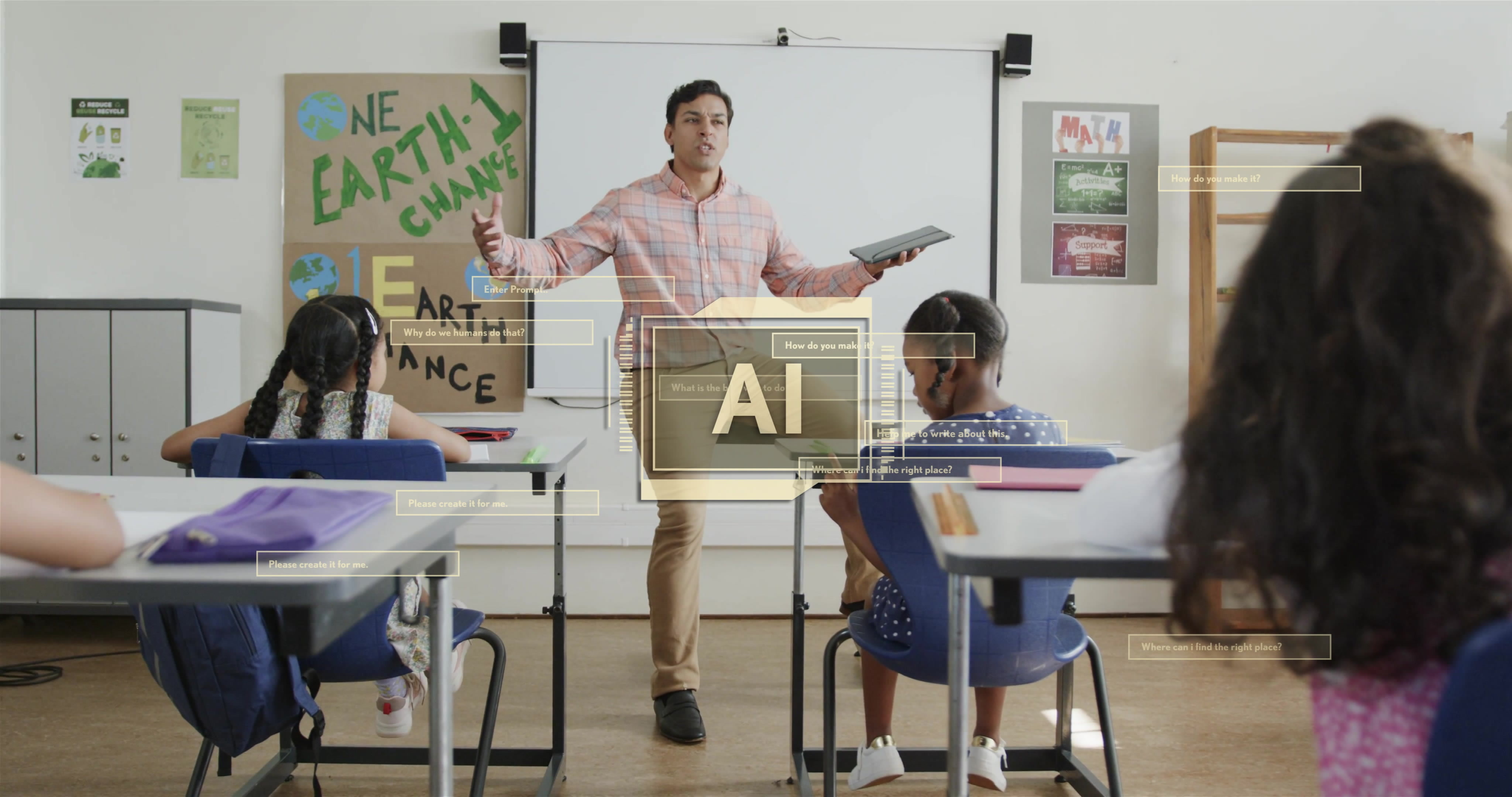K-12 teachers worldwide actively use GenAI education as a double-edged tool to reduce existing educational inequalities while preventing new ones, but their equality-oriented efforts are consistently constrained by infrastructural gaps, insufficient training, and restrictive social norms that require systemic support to overcome.
Objective: This study examined how K-12 teachers across diverse global contexts integrate GenAI education into their classrooms to promote educational equality. The researchers sought to understand teachers' current equality-oriented practices, the structural challenges they face beyond individual control, and their visions for more inclusive GenAI education with broader stakeholder support.
Methods: The researchers conducted 30 in-depth, semi-structured interviews with K-12 teachers actively engaged in GenAI education across three regions: the United States, South Africa, and Taiwan (10 teachers from each region). Participants were selected based on their direct classroom responsibilities, active GenAI teaching experience, and demonstrated interest in educational equality issues. Interviews lasted 60-90 minutes and were conducted remotely via Zoom in participants' primary teaching languages. The study used reflexive thematic analysis with both inductive and deductive coding approaches, comparing findings within and across regions to identify global commonalities and context-specific differences.
Key Findings: Teachers consistently framed GenAI education around two interconnected equality goals. First, they used GenAI to alleviate pre-existing inequalities by addressing consciousness gaps (raising awareness of emerging technologies), resource shortages (compensating for lack of textbooks and materials), digital literacy barriers (leveraging GenAI's natural language interface), and marginalized learner needs (personalizing learning for students with disabilities). Second, they worked to prevent new inequalities from emerging through practices addressing academic shortcuts, peer misuse, cultural biases in GenAI outputs, and overreliance on AI for emotional support. However, teachers encountered persistent structural barriers including unreliable internet connectivity, uneven digital fluency among students, culturally biased GenAI tool design, insufficient professional development opportunities, and restrictive social norms from conservative groups and skeptical parents. Looking forward, teachers envisioned comprehensive support from schools (innovation centers, cross-institutional collaboration), technology companies (cultural localization, accessibility features), and governments (universal AI literacy, community education programs).
Implications: This research demonstrates that GenAI education represents a fundamentally new paradigm distinct from traditional computing education, with teachers serving as crucial mediators of technological possibility and educational values. The findings suggest that achieving educational equality through GenAI requires moving beyond individual teacher initiative to systemic interventions. For educational practice, this means developing comprehensive teacher training programs that address both technical skills and equality-oriented pedagogical strategies. For technology design, companies must prioritize cultural localization, accessibility features, and bias mitigation in GenAI tools. For policy, governments need to invest in infrastructure equity, community education programs, and frameworks that support rather than constrain innovative teaching practices.
Limitations: The study's scope was limited to three regions and may not represent all global contexts with different political economies and technological infrastructures. The research focused primarily on teacher perspectives without including voices of students, parents, policymakers, and technology developers who also shape GenAI education dynamics. The interview-based methodology captured teachers' accounts of practices and aspirations rather than measuring actual student outcomes or long-term impacts. Additionally, the study examined current and envisioned practices during the early adoption phase of GenAI, which may not reflect how these dynamics evolve as the technology matures.
Future Directions: The researchers recommend expanding studies to include additional regions with diverse technological and cultural contexts, incorporating multi-stakeholder perspectives to develop more holistic understanding, conducting longitudinal research to measure actual impacts on student learning and digital literacy development, and testing specific interventions designed to address the structural barriers identified. Future work should also examine how different cultural and linguistic contexts shape GenAI education practices and explore the development of more inclusive and culturally responsive AI tools for educational settings.
Title and Authors: "Do Teachers Dream of GenAI Widening Educational (In)equality? Envisioning the Future of K-12 GenAI Education from Global Teachers' Perspectives" by Ruiwei Xiao, Qing Xiao, Xinying Hou, Phenyo Phemelo Moletsane, Hanqi Jane Li, Hong Shen, and John Stamper.
Published On: September 13, 2025 (arXiv preprint)
Published By: Submitted to ACM Conference on Human Factors in Computing Systems (CHI), published as arXiv preprint arXiv:2509.10782v1
